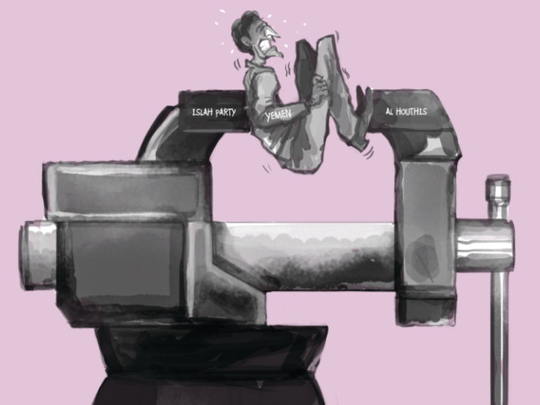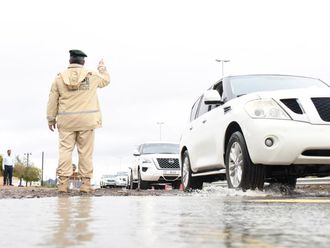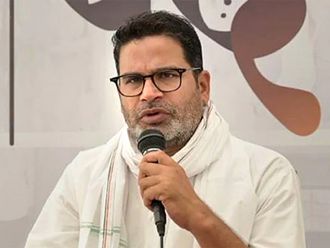
From inside the parade square in Khor Maksar in the city of Aden, Shalal Shaya, one of the key leaders of the peaceful southern movement Hirak announced in front of the masses who came from different southern provinces to commemorate the revolution of October 14 that the Arabian south will return as an independent state, even if this required the declaration of an armed struggle.
The message, which was delivered by one of the most prominent faces of the resistance in Al Dali’ province, inflamed the crowd and was met with an overwhelming response, especially given that the massacre in Al Dali’ which claimed the lives of 20 people in February was never absent from their minds. The victims were killed by the 33rd Brigade as they gathered in the camp to offer their condolences for those who were also killed by the same brigade.
What happened in Aden should not be seen as something that resembles previous celebrations led by the Southern Movement in the past because it happened in the midst of extreme political changes in northern Yemen, led by the new rulers in Sana’a: Al Houthis. Is there an undisclosed agreement between Hirak’s members in Aden and Sana’a’s Al Houthis to change the political map of Yemen so that they can both attain their respective goals of reviving the imamate in the North and restoring the Southern State?
Careful monitoring of the actions and statements of the two parties indicates the continuation of mixed and conflicting messages emanating from both sides. These messages stress that the alleged agreement, which was claimed to be there between the two parties before Al Houthis entered Sana’a does not actually exist.
Messages from both on the diagnosis of the situation in the south point to a possible collision in political attitudes that could lead to political confrontation and even an armed one.
The crowds in the south, who met in the early morning to celebrate the 51st anniversary of the October revolution in Aden, asserted that the primary demand was the separation and independence of the south while Al Houthis’ media platforms continued to emphasise that the attendees demanded a solution to the southern issue and that for Al Houthis it would be worthwhile to give them this solution without addressing its core.
The mystery that surrounds the standpoint of Ansar Allah with regard to what is happening in the south at this time may indicate that Al Houthis do not want to address the issue of the south until they finish what they started in Sana’a and continue the extension of their control over the rest of the provinces of the north, consolidating their status as the new rulers.
The manipulation of the idea of conspiracy in the south may be part of a new political manoeuvring used by Ansar Allah to eliminate entirely the idea of secession of the south.
Al Houthis may find obvious holes in the southern political movement, given the absence of a unified command in the leadership of the southern resistance to achieve the demands of secession. The dispersion of the Hiraki components and the multiplicity of its leadership at home and abroad have played a negative role and continue to weaken the political role of the southerners’ resistance and has had bad implications on the southerners’ demand for self-determination. And it may seem early to talk about the limits of the ability of southerners to manage their own state in case of separation. However, an analysis of the internal relations between the political forces in the south indicates that the political rifts left by the bloody conflict in 1986 are still causing a ripple effect in the southern structure.
Observers inside and outside Yemen disagreed on a proper description of the crisis of Yemen after Al Houthis succeeded in seizing Sana’a. Some of them described it as Al Houthis’ insurgency, and some of them saw it as an extension of the revolution of 2011. Still others saw it as a correction to the path of the revolution.
But the continuing expansion of Al Houthis in different vital locations inside and outside Sana’a confirms that they have the upper hand in Yemen but do not control the entire country. The adversaries in the Yemeni crisis met at the presidential palace in Sana’a on September 21 to sign what they called a “Peace and National Partnership Agreement (PNPA)”.
But 20 days later, Sana’a woke up to the sounds of screaming and howling and scenes of dead and wounded people under the nose of the occupants of the presidential palace, where the signing of the new agreement had taken place. The new deal did not comply with the terms of formal agreements. Each party was keeping an eye on the other due to fear and suspicion. Some wanted to end the crisis, which had resulted in armed clashes, and others wanted to reconcile with the newcomers and remain in power.
This was reflected in the content of the agreement, which included only an outline of what Al Houthis wanted, and what their leader dictated to those who prepared the deal. But unfortunately the document did not include a detailed agenda and strategy for the future of Yemen. The absence of a political agenda and precise strategy in the agreement is not surprising. Al Houthis did not have a proper political agenda of their own. Is this due to their premature execution of the political and military plans and take over of Sana’a?
It had been expected that Al Houthis would control Al Jawf, Hajja and work their way to secure the southern and eastern borders of Sana’a before entering it so they would not be exposed to potential risks from other provinces that are still outside their control. Abdul Malek Al Houthi has warned in his speeches after the signing of agreement the PNPA of possible dissension in the camps of Baida and Marib. This discord may arise in other provinces during the next phase, too. Also, the absence of a political programme and a clear strategy on the part of Al Houthis may constitute a weak point for their leadership inside and outside the capital.
In the southern provinces, the case for secession may constitute one of the obstacles in measuring the skill and the credibility of the new leadership in Sana’a. The south did not represent a threat to Al Houthis before entering Sana’a, but Al Houthis’ pursuit of the capital while ignoring the southern case in the partnership agreement raised the ire of southerners. This can exacerbate the risks for Al Houthis and overburden them in their new mission as new rulers.
The rush to draft a document of peace and national partnership may also reflect the approach with regards to authority. Less that 24 hours after signing, the Yemeni President Abd Rabbo Mansour Hadi said in a speech addressed to the people that “there was a conspiracy against the State and it [the State] will restore things to normal”. This affected the value and credibility of the document and raised an important question for the next phase concerning the relationship between the existing system and Al Houthis: Are Al Houthis partners in ruling Yemen or opponents and enemies of the state?
In the wake of the horrific massacre in front of the Construction Bank in Tahrir Square, which coincided with the killing of 19 soldiers in Ghabr in Hadramout and other soldiers in Shebam, the gap has widened between the political factions. It became clear that the crisis in Yemen did not only revolve around choosing the right prime minister or the next government ministers.
It seems that the lack of political vision led every political party to the current impasse and the main victim in this ordeal are the Yemeni people. This void in the political and economical spheres has led Yemen from one failure to another in the past decades.
The leadership was handed over to individuals often lacking the skills to manage reforms in Yemen, starting from the decision to reunify Yemen in 1990, which was regarded by many as a hasty decision that contributed to triggering conflicts. The war in 1994 ended in failure, and with the exit of a key element in the political process.
After the revolution of 2011, the new charter lacked any real national consensus regarding the appointment of the president or choosing the government or planning for the regions. So the PNPA may represent the last hope for the Yemeni people in their search for a way out of the ongoing crisis.
The atmosphere in Sana’a, Aden and other provinces in Yemen is still tense and each side has its finger on the trigger. Al Houthis are aware of this and as a result they refused to remove their camps from Sana’a or disarm their followers and withdraw from Amran, Jawf and Marib. The explosions that followed the signing of the document in Sana’a targeting Al Houthis indicate that their opponents have not raised the white flag yet.
But the greatest danger lies in the possible attempt of each party, whether Al Houthis, the Islah Party or the ruling regime, to mobilise military brigades to achieve their goals. This threatens to transfer the conflict out of the capital to the rest of Yemen.
An indepth look at the Yemeni reality shows that each political group, whether in the north or in the south, is trying to exploit the political card available on the ground and move the situation in their favour. This has been done by exploiting conspiracy theories or by playing the religious card or using the intimidation of Al Qaida. Which means that the country is on the verge of a serious political changes.
The turmoil in Yemen has its own political direction and distinctive characteristics that distinguishes it from other ‘Arab Spring’ states. Yemen needs radical political reform and this will not be achieved overnight and will not be applied by one political group. It cannot be executed without building confidence between the political parties. What is needed is a clear, transparent political agenda to achieve the interests of the people, whether in the north or in the south.
Haifa AlMaashi is a former professor at the University of Aden and a senior researcher in ‘b’huth’ (Dubai).










